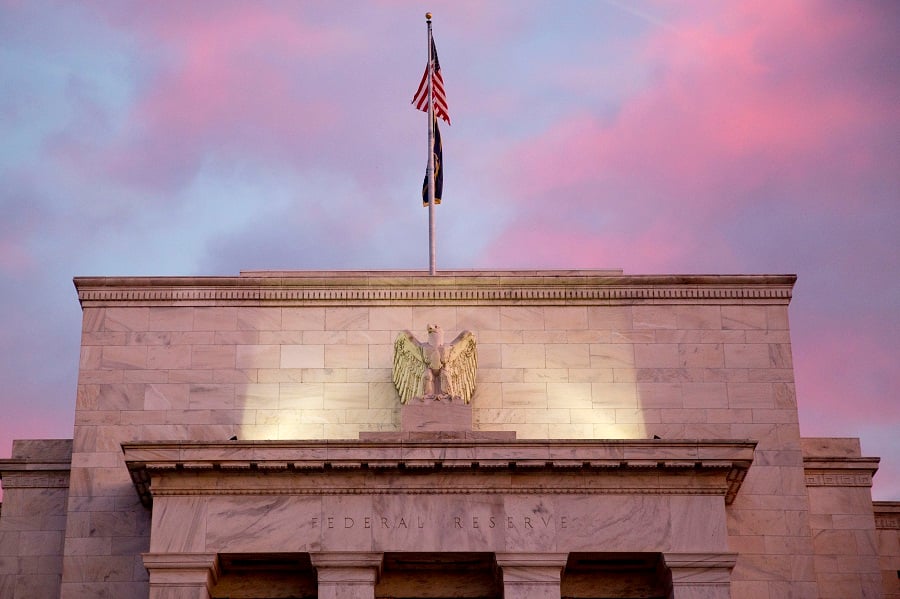The Federal Reserve indicated a readiness to cut interest rates for the first time in more than a decade to sustain a near-record U.S. economic expansion, citing "uncertainties" in their outlook.
While chairman Jerome Powell and fellow policy makers left their key rate in a range of 2.25% to 2.5% on Wednesday, they dropped a reference in their statement to being "patient" on borrowing costs and forecast a larger miss of their 2% inflation target this year.
While inflation near the goal and a strong labor market are the most likely outcomes, "uncertainties about this outlook have increased,'' the Federal Open Market Committee said in the statement following a two-day meeting in Washington. "In light of these uncertainties and muted inflation pressures, the Committee will closely monitor the implications of incoming information for the economic outlook and will act as appropriate to sustain the expansion."
The FOMC vote was not unanimous. St. Louis Fed President James Bullard dissented in favor of a quarter-point rate cut. His vote marked the first dissent of Mr. Powell's tenure as chairman.
Policy makers were starkly divided on the path for policy. Eight of 17 pencilled in a reduction by the end of the year, while another eight saw no change and one forecast a hike, according to updated quarterly forecasts.
In the statement, officials downgraded their assessment of economic activity to a "moderate" rate from "solid" at their last gathering.
The pivot toward easier monetary policy shows the Fed swinging closer to the view of most investors that President Donald J. Trump's trade war is slowing the economy's momentum and that rates are too restrictive given sluggish inflation.
The change in tone follows attacks on the Fed by Mr. Trump for not doing more to bolster the economy and Tuesday's report that the president asked White House lawyers earlier this year to explore his options for demoting Mr. Powell from the chairmanship.
That risks casting a political shadow over whatever policy decision the Fed makes, though Mr. Powell and his colleagues say they're focusing only on the economic goals Congress gave them.
Officials noted that "growth of household spending appears to have picked up from earlier in the year" and that indicators of business fixed investment "have been soft." They repeated that the labor market "remains strong."
Investors have been betting the Fed will reduce rates at its next meeting in late July, though a majority of economists surveyed earlier this month
don't expect a move until December. Yields on 10-year Treasuries have fallen to the lowest since 2017. The hope of fresh stimulus has sent U.S. stocks to near a record.
(More: What the market rebound is telling investors)
Recent U.S. economic data have been mixed. Consumer spending held up in May but job gains were disappointing, and some gauges of business sentiment have cooled on uncertainty around the outlook for trade. The Fed remains bedevilled by inflation that continues to undershoot the central bank's 2% target despite unemployment being at a 49-year low.
Central bankers are likely hoping for greater clarity over Mr. Trump's trade war with China. Stocks jumped on Tuesday after the president said he would meet Chinese leader Xi Jinping at next week's Group of 20 summit in Japan.
The Fed, which raised interest rates four times last year and as recently as December projected further hikes in 2019, isn't alone in shifting tack. European Central Bank President Mario Draghi on Tuesday paved the way for a rate cut, and central banks in Australia, India and Russia have lowered borrowing costs this month.
(More: Fixed-income focus: Beware ending up with the 'ultra-short' straw)
More from Fed
• The median projection for 2019 GDP growth was unchanged at 2.1% and revised up by a tenth of a point to 2% in 2020. The 2021 estimate was held at 1.8%.
• The median unemployment rate forecasts for 2019 through 2021 were all lowered by a tenth of a point. Officials see a 3.6% rate this year rising to 3.7% next year and 3.8% in 2021.
• Officials see the jobless rate most consistent with full employment in the long run at 4.2%, versus 4.3% in March.
• Officials cut estimates for their preferred inflation gauge. The personal consumption expenditures price index is expected to increase just 1.5% in 2019, down from a 1.8% projection in March. By 2020, the main and core gauges are both projected to rise 1.9%, below the target.







